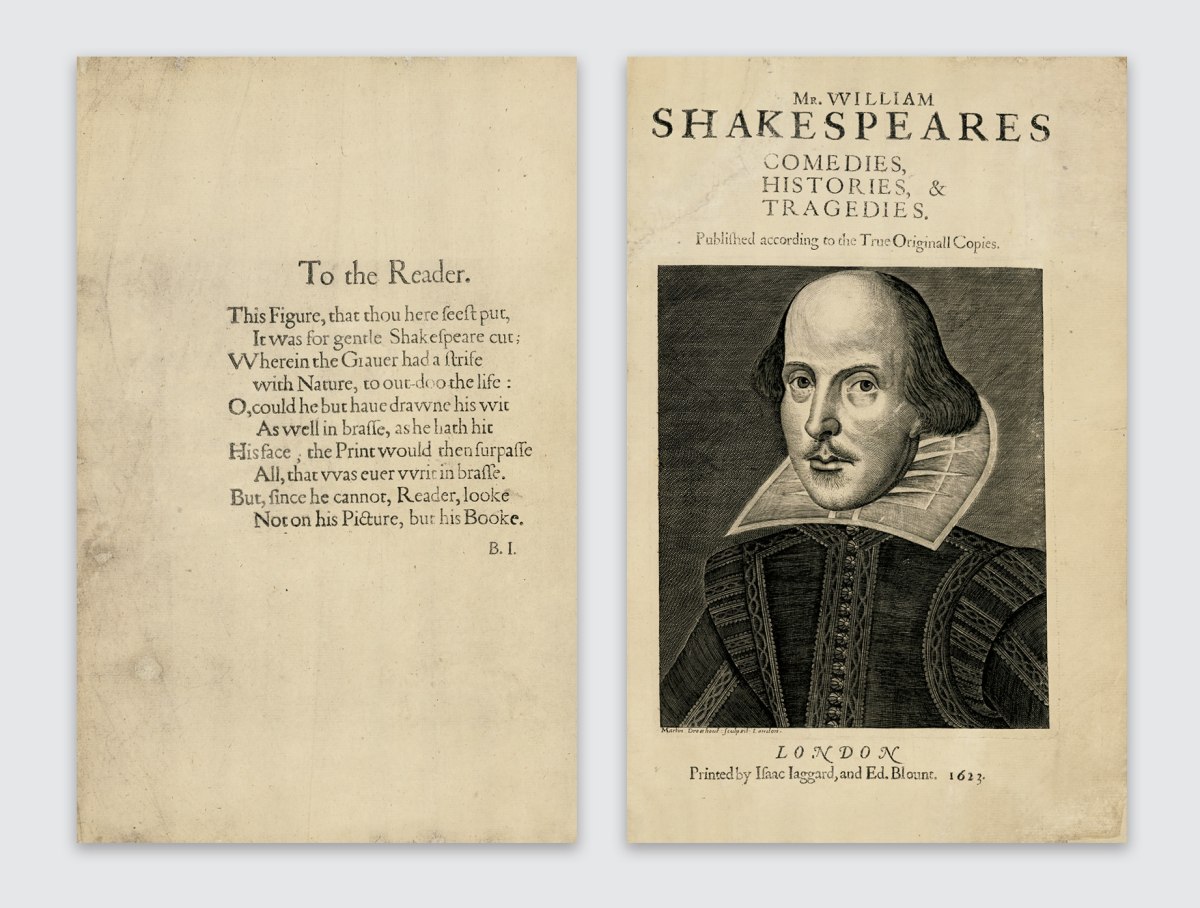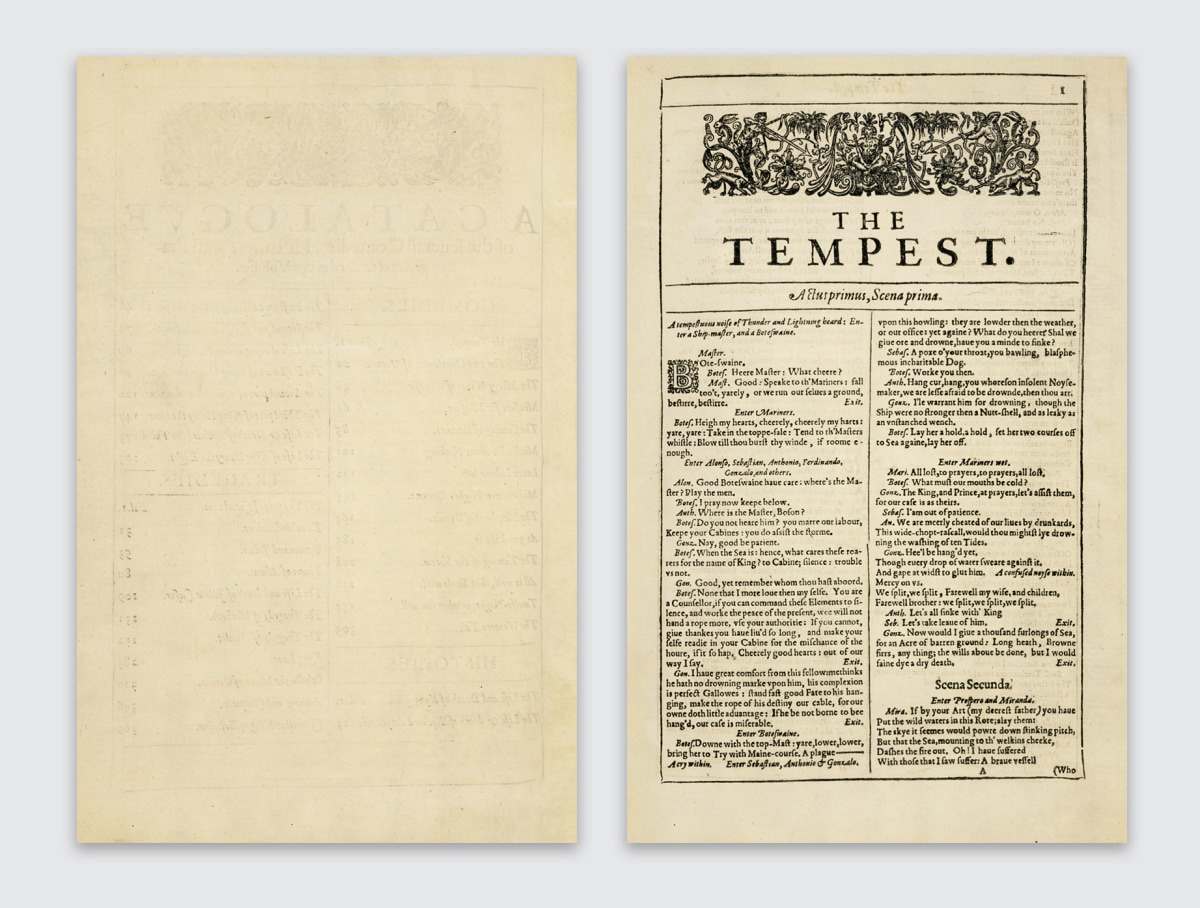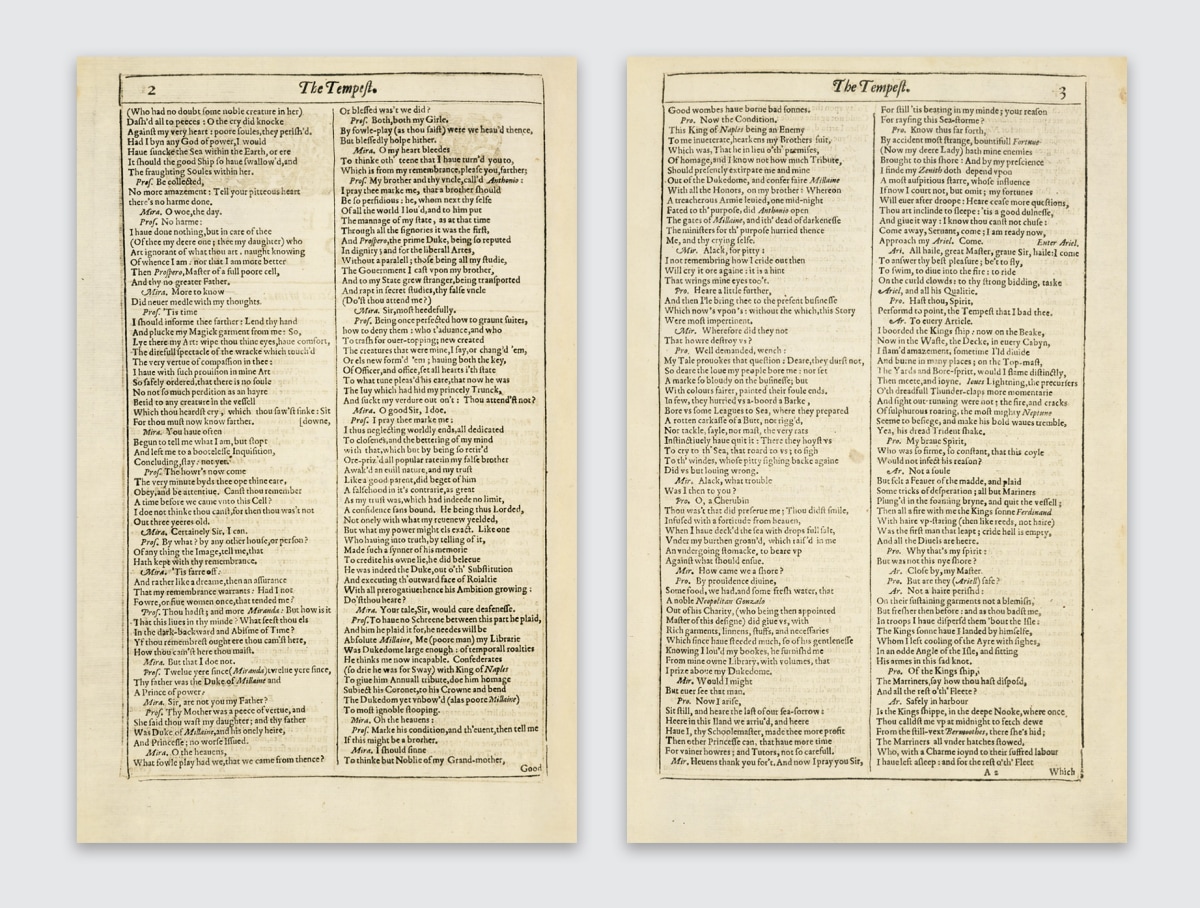- | 8:00 am
You can now own a perfect replica of ‘Shakespeare’s First Folio’
Rizzoli and the British Library have resurrected the book that redefined literature 400 years after it was first published.

Today, William Shakespeare is high culture—but back in the Bard’s day, his work was either pop fiction or history in a hurry; disposable entertainment for the groundling masses. Certainly not the sort of thing you’d find in the hallowed “folio” book format of the era that was home to critical history tomes and other titles of literary merit.

So, it likely came as a surprise to the literary elite that seven years after Shakespeare’s death, his friends cobbled together the 900-plus-page “Shakespeare’s First Folio,” aka Mr. William Shakespeare’s Comedies, Histories & Tragedies, Published According to the Original Copies”—a mountain of plays in an 8.5-by-13-inch format, replete with ornamented drop caps and decorative headers. In doing so, they saved such works as Julius Caesar, Macbeth and The Tempest from being lost to time—and played a critical role in elevating Shakespeare and his entire craft in the process.
Now, 400 years later, said friends would likely be bowled over by the fact that the British Library and Rizzoli have published a faithful facsimile edition of their ramshackle First Folio, which celebrates its four-century birthday in November. For the big anniversary, the British Library also went big; publisher John Lee says the project is larger in scope than anything the library has ever produced in-house.

About a year ago, he stumbled upon the fact that the anniversary was incoming, so he went to inspect a copy of the First Folio and came up with a plan for a lavish full-size reproduction, which he eventually laid out to his publishing partners at Rizzoli.
“And then quite terrifyingly, they said, ‘Yeah, that’s okay, let’s run with that.’”
Of the original 750 copies that were produced of the First Folio, only around 235 are still known to exist. The British Library has five. Yet Lee says there was a clear candidate for the facsimile: the “Phelps-Clifford” folio, a rare, complete early edition—a first First Folio, if you will—distinguished by its somewhat unrefined and underwhelming author illustration of Shakespeare, which the artist improved in subsequent printings. (The book itself was proofread as it was printed, and thus the earlier copies contain the most interesting and unique quirks.)

The good news for Lee’s team: The complete folio had already been fully digitized in an earlier initiative for screen use, and they were obviously freed from having to do any text editing on it . . . or setting 900-plus pages in metal type, as the original artisans did over the course of one year.
The bad: The folio had been digitized for screen use, not print. So in lieu of having original photography done specifically for the project, the production team worked to refine the earlier images, and addressed the myriad challenges from the book therein: varying ink density; gutters that were visible by virtue of the book not laying totally flat; different hues of paper, a result possibly as much due to the passing of centuries as the lighting not being consistent when the book was shot.
The British Library’s main goal was to give readers the experience of combing through this specific volume today. So when perusing the tome—all nine pounds of it—you can see where text bleeds through opposing pages, owing to the original’s thin paper and 400 years of time passing. There are scratches, stains, and ample imperfections—and that carries over to the content of the manuscript itself, which contains errors, such as the names of actors accidentally subbed in for Shakespeare’s characters, and so on. The printed page numbers are also at times incorrect, which, in addition to making Lee’s “head spin,” created file-naming convention challenges galore.

The team did allow for some improvements: notably, beefing up the paper stock to 100 GSM to prevent new bleed-through problems in the future. They printed in four colors. And they deployed a real cloth cover—which is perhaps as faithful as they could be in that department. Lee says that when one originally purchased a First Folio, they would receive the manuscript, but were then responsible for having it bound, which at the time culminated in unremarkable “leather blobs.” So his team deferred to the edition’s rebinding from the early 20th century, with its decorative spine, gold foil, and charming endpapers. They also added a slipcase of their own design for posterity.

So far, the project has proven to be a success, with a second run in the works before the first was even released. But the ultimate feather in Lee’s cap might just be this: At the Frankfurt Book Fair in October, a bookseller told him that someone came into their shop and asked if the edition on display in the window was in fact a real First Folio.
Still, why put all the effort into a facsimile when you could just publish a handsome collection of the plays for the anniversary and call it a day?
For fans of literature, a visit to the rare book paradise of the Treasures of the British Library Gallery is akin to a religious experience. But it’s an experience that stops at the glass case before you.
Ultimately, for Bard loyalists, this facsimile is worth its weight in gold—or at least the $135 it costs to be able to crack open those storied covers yourself.
“The [goal], which is also part of what the library stands for, is to make things more accessible to a broader readership,” Lee says. “This book is as close as you’re going to get to actually holding the real thing.”
All Images © The British Library Board, excerpted with permission from “Shakespeare’s First Folio: 400th Anniversary Facsimile Edition: Mr. William Shakespeares Comedies, Histories & Tragedies, Published According to the Original Copies,” published by Rizzoli in the USA and The British Library Publishing in the United Kingdom.







































